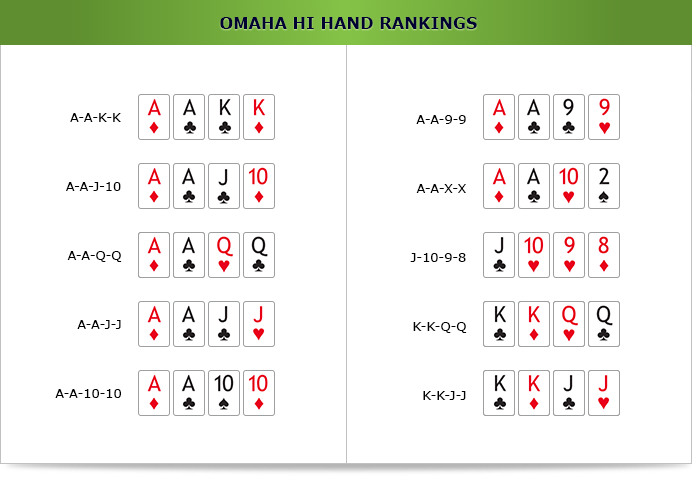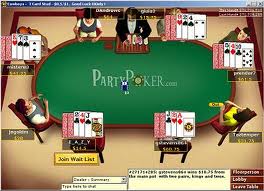Rules of the Game. Each player is dealt four cards face down and one up card. Unlike regular Stud Hi/ Low the high card brings in the forced bring in bet. A round of betting occurs and players discard two cards before 4th Street is dealt. The high hand is first to act on all subsequent streets. 7 Card Stud Hi Lo. 7 Card Stud is often referred to as a game that helped bring about the existence of Texas Hold’em and other popular poker variants, and for good reason too. Prior to Hold’em, Stud was the game of choice not only in the US, but in most regions of the world. The following few sections will elaborate upon all the rules of.
In hold'em, players receive two down cards as their personal hand (holecards), after which there is a round of betting. Three board cards are turned simultaneously (called the flop) and another round of betting occurs. The next two board cards are turned one at a time, with a round of betting after each card. The board cards are community cards, and a player can use any five-card combination from among the board and personal cards. A player can even use all of the board cards and no personal cards to form a hand ('play the board'). A dealer button is used. The usual structure is to use two blinds, but it is possible to play the game with one blind, multiple blinds, an ante, or combination of blinds plus an ante.
Rounds of Betting
- Opening deal- Each player is dealt two cards face down, which are known as hole cards or pocket cards.
- First round of betting- Starting with the player to the left of the big blind, each player can call the big blind, raise, or fold. The big blind has the option to raise an otherwise unraised pot.
- The flop- The dealer burns a card, and then deals three community cards face up. The first three cards are referred to as the flop, while all of the community cards are collectively called the board.
- Second round of betting- Starting with the player to the left of the dealer button, each player can check or bet. Once a bet has been made, each player can raise, call, or fold.
- The turn- The dealer burns another card, and then adds a fourth card face-up to the community cards. This fourth card is known as the turn card, or fourth street.
- Third round of betting- It follows the same format as the second round, but the size of the bets have usually doubled in limit games.
- The river- The dealer burns another card, and then adds a fifth and final card to the community cards. This fifth card is known as the river card, or fifth street.
- Final round of betting- It follows the same format as the second and third rounds.
- The showdown- Using the best five-card combination of their hole cards and the community cards, the remaining players show their hands, with the bettor or last raiser showing first. The highest five-card hand wins the pot. (In case of a tie, the pot is evenly split among the winning hands.)
Hi Lo Stud Poker Rules 2017
- These rules deal only with irregularities. SeeButton and Blinduse for rules on that subject.
- If the first or second hole card dealt is exposed, a misdeal results. The dealer retrieves the card, reshuffles, and recuts the cards. If any other holecard is exposed due to a dealer error, the deal continues. The exposed card can not be kept. After completing the hand, the dealer replaces the card with the top card on the deck, and the exposed card is then used for the burncard. If more than one hole card is exposed, this is a misdeal and there must be a redeal.
- If the flop contains too many cards, it must be redealt. (This applies even if it is possible to know which card is the extra one.)
- If the flop needs to be redealt because the cards were prematurely flopped before the betting was complete, or the flop contained too many cards, the board cards are mixed with the remainder of the deck. The burn card remains on the table. After shuffling, the dealer cuts the deck and deals a new flop without burning a card.
See Explanations,discussion #2, for more information on this rule. - If the dealer turns the fourth card on the board before the betting round is complete, the card is taken out of play for that round, even if subsequent players elect to fold. The betting is then completed. The dealer burns and turns what would have been the fifth card in the fourth card's place. After this round of betting, the dealer reshuffles the deck, including the card that was taken out of play, but not including the burn cards or discards. The dealer then cuts the deck and turns the final card without burning a card. If the fifth card is turned up prematurely, the deck is reshuffled and dealt in the same manner.
See Explanations,discussion #2, for more information on this rule. - If the dealer mistakenly deals the first player an extra card (after all players have received their starting hands), the card is returned to the deck and used for the burn card. If the dealer mistakenly deals more than one extra card, it is a misdeal.
- If you are playing the board, you must so declare before you throw your cards away; otherwise you relinquish all claim to the pot.
In traditional poker games, the player with the best traditional hand wins the whole pot. Lowball variations award the pot to the lowest hand, by any of several methods (see Low hand (poker)). High-low split games are those in which the pot is divided between the player with the best traditional hand (called the high hand) and the player with the low hand.[1]
Hi Low Poker Rules
There are two common methods for playing high-low split games, called declaration and cards speak. In a declaration game, each player declares (either verbally or using markers such as chips) whether he wishes to contest for the high hand or the low hand. The lowest hand among those who declared low wins that half of the pot, and the highest hand among those who declared high wins that half (for further details, see declaration). In a cards speak game, all players simply reveal their cards at showdown and the hands are evaluated by all players; high hand wins half of the pot and low hand wins the other half.
Free Hi Lo Poker
Especially when using the ace-to-five low method, it is possible for one player to have both the low hand and the high hand, and therefore win all of the pot (called 'scooping,' 'hogging' the pot, or 'going pig'). In the event more than one player ties for either high or low, the pot can be further split into quarters or smaller fractions. For example, if one player has the high hand on showdown, and two other players tie for the best low hand, the high hand wins half of the pot and each low hand wins only a quarter of the pot.
It is common, especially in cards speak games, to require a certain hand value or better to win the low half of the pot, called a qualifier. For example in an 'eight or better to qualify low' game, a player with a hand of eight-high or lower is entitled to win the low half of the pot (assuming his hand defeats all other low hands), but a player with a 10-high or 9-high hand cannot win, even if his hand is the lowest. In this case, the high hand wins the entire pot. There is generally no qualifier to win high, although one common variant is any pair/no pair, where a hand of at least a pair is required to win high and any hand with no pair is required to win low.
In high-low split games where each player is dealt more than five cards, each player chooses five of his cards to play as his high hand, and/or five of his cards to play as his low hand. The sets may overlap: for example, in seven-card stud played high-low split, a player dealt 7-7-6-4-4-3-2 can play a high hand of 7-7-4-4-6 (two pair, sevens and fours) and a low hand of 7-6-4-3-2 (seven-high).
Bluffs can be especially powerful in high-low split games, because a player making a successful bluff wins the whole pot rather than having to share it. This fact also makes bluffs less likely to succeed.
See also[edit]

References[edit]
- ^Zee, Ray (1992). High-Low-Split Poker, Seven-Card Stud and Omaha Eight-or-better for Advanced Players. Two Plus Two Pub.; 2nd edition, ISBN9781880685105[page needed]